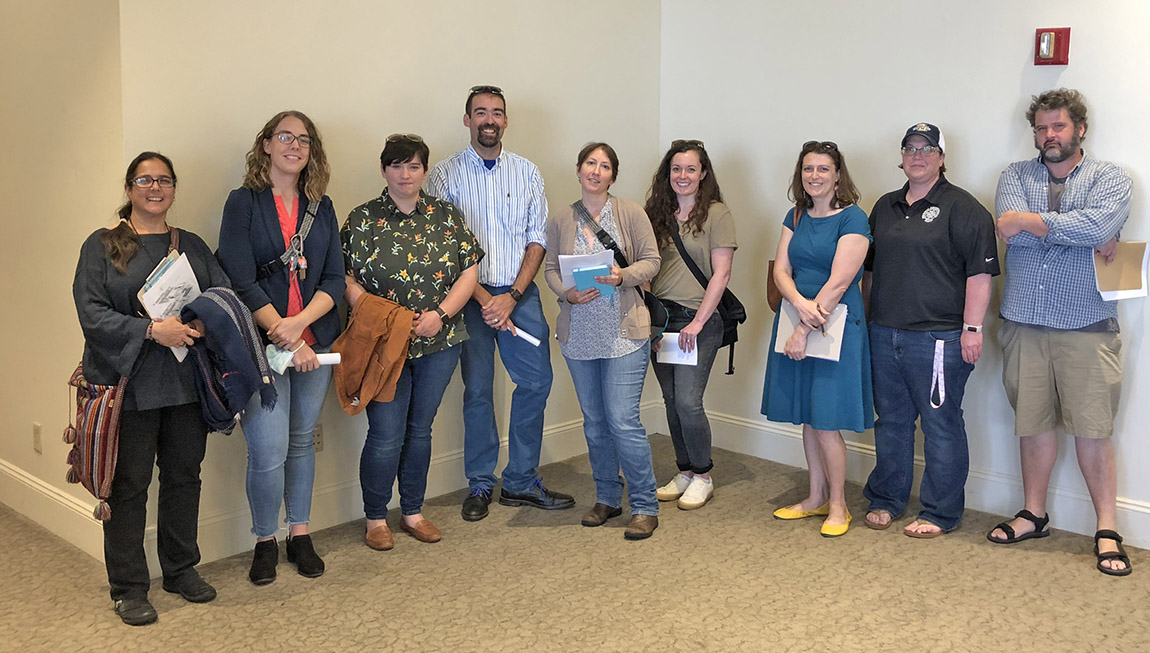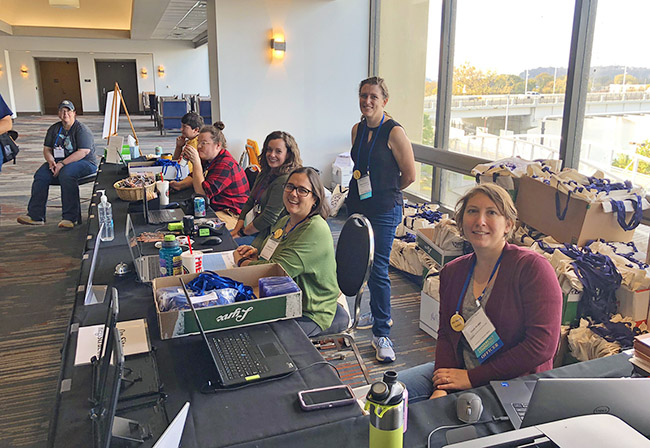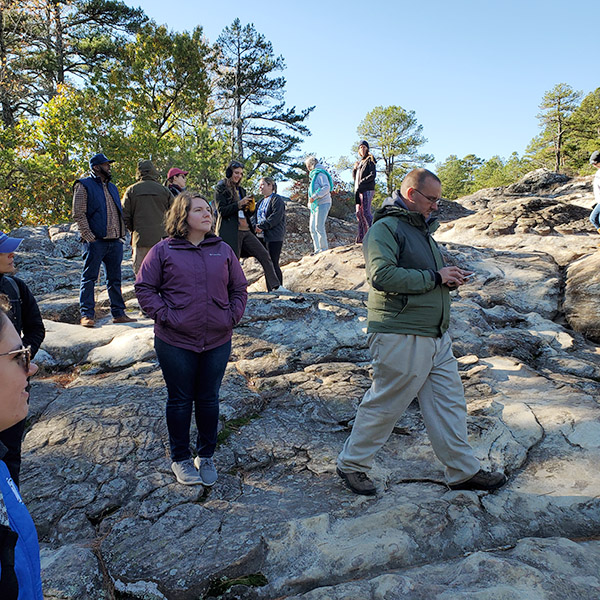-Azar, Madeline C, Images in Clay: Synthesizing Archaeology, Ethnohistory, and American Indian Philosophy to Interpret Ritual Potting Practices in Northeast Arkansas, AD 1350-1550
-Beaupré, Andrew, “Poste de Arkansea”: Current Research into French Settlement in the Arkansas River Valley
-Bissett, Thaddeus A, 12,000-year Occupation and Use History of Three Sites in the Southern Ouachita Mountains, Garland County, Arkansas
-Bjornen, Gillian [Gillian Steeno], Household Manifestations of Coalescence at Carden Bottoms (3YE0025) and in the Arkansas River Valley
-Bozard, Liley, Catherine Clayton, John Samuelson, Collections Management at the Arkansas Archeological Survey: A View from Old Washington
-Buchner, C. Andrew, Geophysical Investigations at the Magnesia Springs Site (3CO64) in Southwest Arkansas
-Coe, Marion and Joshua Lynch, A First Look at Perishable Artifacts from the Gregoire Collection, Boston Mountains, Arkansas
-Chovanec, Zuzana, Timothy Dodson, Early Streetcar Transportation in Little Rock, Arkansas: A Historical and Archaeological Perspective
-Childress, Mitchell, Archaeological Research at the Ohlendorf Site, Mississippi County, Arkansas
-Compton, Matthew J., Juliet Morrow, Eating Local? Late Mississippian Animal Use along the Middle White River, Arkansas
-Drexler, Carl, Food, Trade, and Empire: Caddo and Settler Saltmaking at the Holman Springs Site (3SV29), Sevier County, Arkansas
-Ford, Paige, Layers of Meaning: Multicultural Placemaking at Toltec Mounds
-Fosaaen, Nathanael, An Ever- Fading Glimpse of All Eternity: A Zooarchaeological Analysis of Ozarchaic Fauna from Saltpeter Cave, Arkansas.
-Jones, Rachel, The History and Archaeology of the Sulphur Fork Factory
-King, Noelle, Spatial Layout at Isgrig: a Menard Complex Site in the Central Arkansas River Valley
-Klehm, Carla, Malcolm Williamson, 3D Documentation of Petroglyphs at Edgemont Shelter, Arkansas: Strategies for Visualization and Publication of Poorly Preserved Rock Art
-Martin, Terrance J., A Zooarchaeological Perspective on Early Colonial Interactions at the Wallace Bottom Site (3AR179) in Southeastern Arkansas
-Lockhart, Jami, Recent Cultural Landscape Studies in Arkansas
-Lynch, Joshua, Emily Beahm, Angela Gore, Lei Zhang, Kristina Hill, Visualizing Dalton Bluff Shelter Assemblages in the Boston Mountains, Arkansas
-Morrow, Juliet E. and Sarah D. Stuckey, From Lanceolate to Notched Projectile Point Technology in the late Pleistocene-Early Holocene New World
-Pyszka, Kimberly and Bobby Braly, Construction History and the Misnomer of Cane Hill’s Methodist “Manse”
-Rooney, Matthew, Virginia O’Connor, Katherine Gregory, From Hollywood to Valley: Excavating a Black Plantation House Site in Arkansas
-Rossen, Jack, Edmondson Farmstead (3CT73): A 14th Century Mississippian Neighborhood in Crittenden County, Arkansas
-Samuelson, John, Elizabeth Horton, Geographically Sourcing Plants Using Pb/Sr Isotopes and Trace Elements in Arkansas and Oklahoma
-Scott, Robert, Freshwater Mussel Remains from the Heber Springs Site (3CE68), Cleburne County, Arkansas
-Shepard, Sarah, Archiving Arkansas: Records and Collections Management at the Survey
-Smith, Kevin E, The Filfot Connection: Exploring the Travels of a Late Prehistoric Motif for Southern Appalachia to Western Arkansas and Beyond
-Stuckey, Sarah D., Juliet E. Morrow, Jami J. Lockhart, Matthew Compton, Daniel Pierce, Current Research on the Mississippi Town Known as the Greenbrier Site (3IN1), on the White River in the Ozarks
-Watt, David, Hidden Homesteads: Research on the African American History of Arkansas Post National Memorial
-Wilson, Carrie, Effigy Pots: Corn Gods to Frogs - A Tribal Perspective




